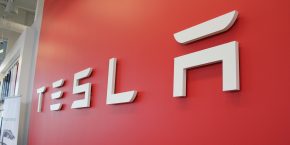
Yesterday, Tesla released two very interesting videos of the latest version of its self-driving technology on the new Autopilot 2.0 hardware. While they are fascinating to watch, they were both sped up. I think it’s worth revisiting the test with the video slowed down to real-time in order to really appreciate the level of autonomy Tesla achieved so far.
The first thing you will notice with the video below at approximate real-time speed is that the system hesitates on a few occasions.
It certainly doesn’t look like an experienced comfortable driver, but it does look like a capable licensed driver, which is an accomplishment on its own.
It also looks like a significant improvement on the demonstration released last month and that’s only on Tesla’s test fleet no less. We have to keep in mind that Tesla is betting on machine learning to improve this system. It means that big data will make a difference. We don’t know exactly how big is Tesla’s test fleet, but it’s certainly nothing close to 25,000 vehicles, which should be Tesla’s Autopilot hardware 2.0 fleet around this time next quarter.
That fleet will accumulate miles with Tesla’s self-driving software running in shadow mode a lot faster than its test fleet.
But in the meantime, that’s where Tesla’s Autopilot team is right now:
A good example of the system being hesitant is at ~3:55 when it stops for joggers on the side of the road. It doesn’t look like it needed to stop and human driver probably wouldn’t have, but Tesla Vision detected the woman closest to the road as an “in-path object” and stopped for a moment.
Another interesting thing to look at is the free space detection, or in other words, where the vehicle knows it can drive. It is represented on the medium-range vehicle camera as “road flow”. You can identify a few glitches at real-time speed, but overall Tesla seems to be already quite good at it.
We expect Tesla will be releasing more of those video demonstrations as the system improves with more data coming from the fleet equipped with Autopilot 2.0 hardware in order to build confidence in the system ahead of its launch.
We put together an article about Tesla’s expected timeline for the release of new Autopilot features and full self-driving: Tesla’s software timeline for ‘Enhanced Autopilot’ transition means ‘Full Self-Driving Capability’ as early as next year
FTC: We use income earning auto affiliate links. More.




Comments